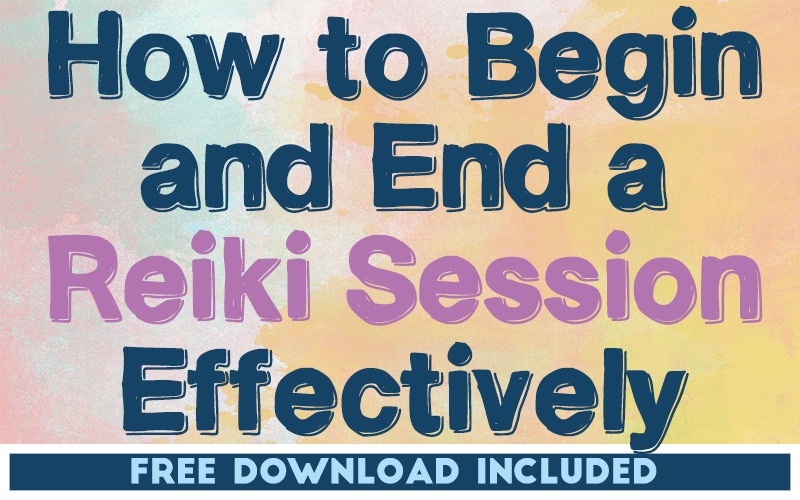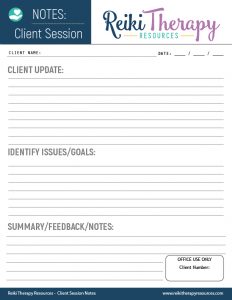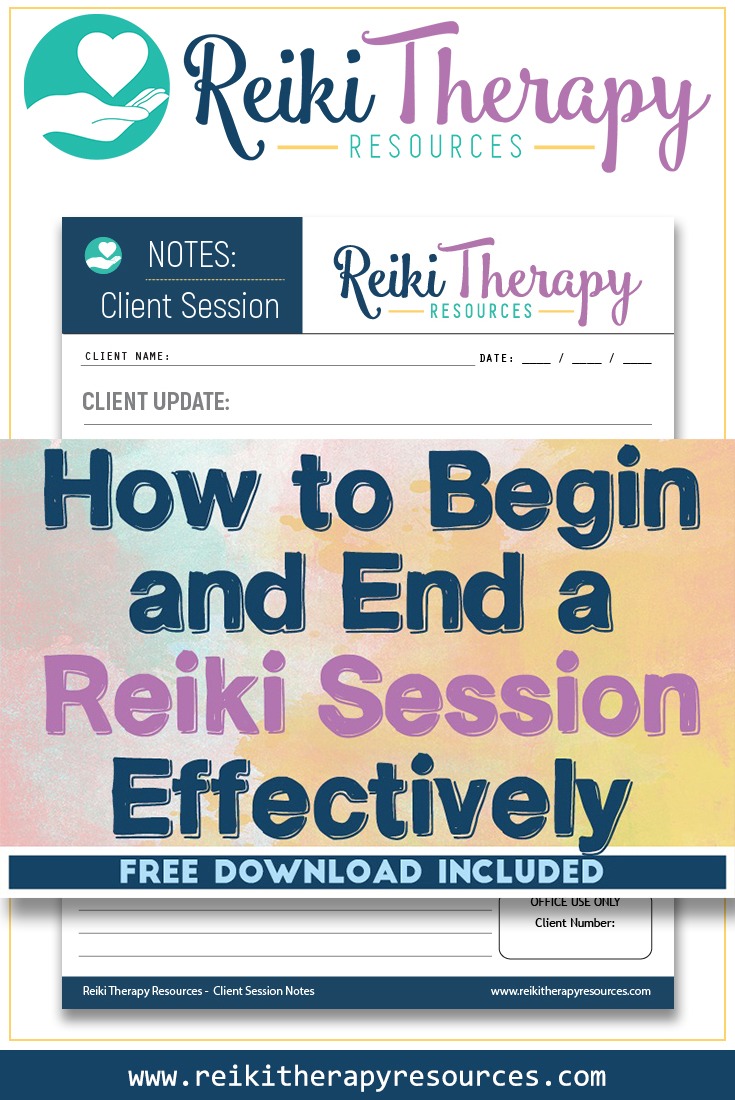
THIS POST INCLUDES:
——————————————–
1. Reiki Session Flow
2. Reiki Session Breakdown
3. After the Reiki Session
4. FREE DOWNLOAD Client Session Plan Template
REIKI SESSION FLOW
Most Reiki therapy sessions do not follow a set structure. Each client presents with their own unique problems and goals and therefore it’s important to remain flexible to suit your client’s needs. For the majority of Reiki sessions, you can put a structure in place to provide a framework in which both your client and you can feel the sessions are beneficial.
Sessions should hopefully be healing, relaxing, and comforting for clients. If a client is seeking Reiki for a specific issue that is a source of difficulty in their life, they may experience an emotional release as part of their session, however, they should leave the Reiki session feeling supported and uplifted by the Reiki practitioner.
In this blog post, we have provided a basic Reiki session guide to help Reiki practitioners with a framework on how to conduct a healing Reiki session. An effective Reiki session begins and ends outside of direct client contact as the Reiki practitioner prepares for the session, and concludes the session with any relevant client session notes regarding the client’s treatment.
As always, use your Reiki skills and understanding of your client to develop a personalized session for your client and their current situation.
REIKI SESSION BREAKDOWN
PRE-SESSION – prepare for your Reiki session
NEW CLIENT: if your client is attending their first Reiki session with you, you should prepare any relevant client intake forms to record your client’s details. Review any notes recorded about the client at the time the booking was made so that you feel prepared for your client.
RETURNING CLIENT: If your client is continuing on from previous Reiki sessions, review past client notes to reacquaint yourself with your client’s issues and goals.
For both new and returning clients, it is helpful to engage in a private moment of intention to work with your client with openness, acceptance, and gratitude.
On a practical note, make sure that you are hydrated, not hungry, and have been to the bathroom if necessary. Your physical comfort flows and therefore it’s helpful to ensure you are feeling as comfortable as possible.
START SESSION – welcome your client to the Reiki session.
NEW CLIENT: If your client is new to your Reiki practice, you can discuss your role and your approach to Reiki treatment. You can put your client at ease by providing them with a basic outline of the treatment process that you use with clients. Ask your client about their reason for making an appointment and any goals they may hope to achieve in their time with you. This is an ideal opportunity to learn about your client and what they seek to gain from their time with you.
RETURNING CLIENT: If your client is returning for additional sessions, ask them for an update on issues from previous sessions to learn of any benefits your client is experiencing from their Reiki treatment. This is a good opportunity to discuss whether any issues have been resolved or continue to affect your client. Discuss with your client any existing problems they are experiencing and agree on how you will proceed with the Reiki session for that day.
DURING THE REIKI SESSION
As you progress with the Reiki session, remain open to the client’s experience. Seek feedback when useful, however, it’s useful to keep in-depth discussions limited so that the client can immerse themselves in the relaxing and healing process of Reiki.
AFTER THE REIKI SESSION
CLOSE SESSION
As the Reiki session comes to a close, use this opportunity to review the session with your client and invite your client to provide their own reflections and insights they may have gained from the Reiki sessions. What thoughts came to mind for the client? Did they experience any confronting emotions or physical experience throughout the Reiki treatment?
After the session ends, your client will need to return to the outside world. You may want to check if your client is ok to drive or whether they need some time to gather their thoughts and energy. You may also want to check they are hydrated and offer a drink of water.
Have your client sit up for a few minutes so that they can reorientate themselves to the space and light around themselves. Remind your client that they should stay hydrated for the rest of the day and to move calmly through the rest of the day as they continue to receive the benefits of their Reiki treatment.
Your client may have some questions about their treatment and whether any specific benefits or effects will occur. It’s important to be honest and not mislead your client about any benefits. Reaffirm with your client that their intention to seek healing and restoration is a positive step they are taking towards improving their life experience.
Don’t forget to schedule your next session if necessary.
POST SESSION
After the session has completed, you can update your client session notes to record any treatment updates. You can include notes regarding improvement as well as notes regarding any ongoing issues that your client would like to work on.
Use this opportunity to prepare anything you may need for future client sessions. It’s best to record your thoughts in your client’s notes as soon as possible after the session, however, if you are unable to do the update immediately, you should write some brief notes that you can expand on later.
FREE DOWNLOAD
SIGN UP below to receive your FREE DOWNLOAD. Once you enter your email address, you will receive access to the Free Client Session Notes Template.

BUILD YOUR REIKI REFERENCE MATERIALS:
Pin this image to your Pinterest board.

SHARE KNOWLEDGE & PASS IT ON:
If you’ve enjoyed this post, please share it on Facebook, Twitter, Pinterest. Thank you!
